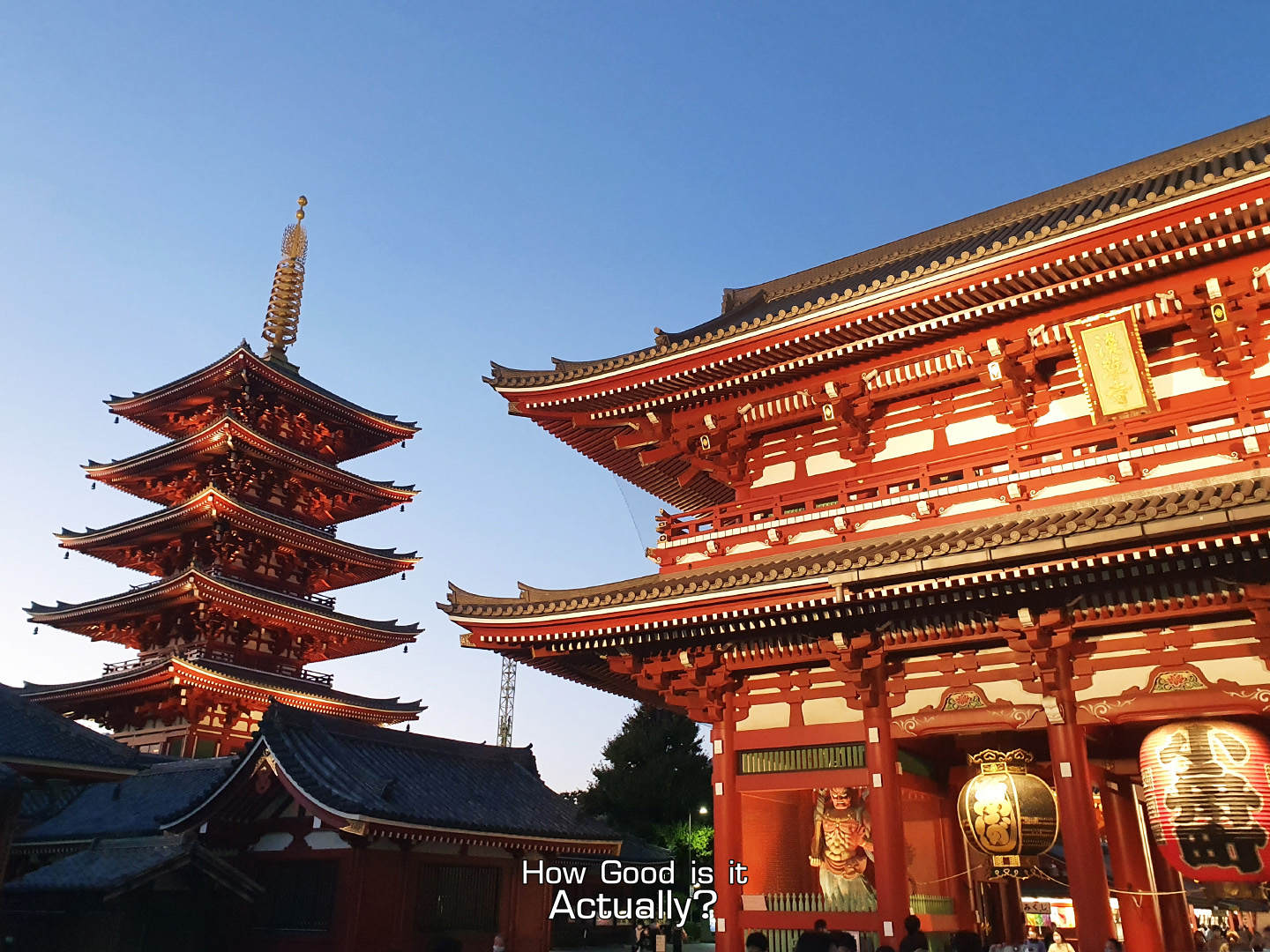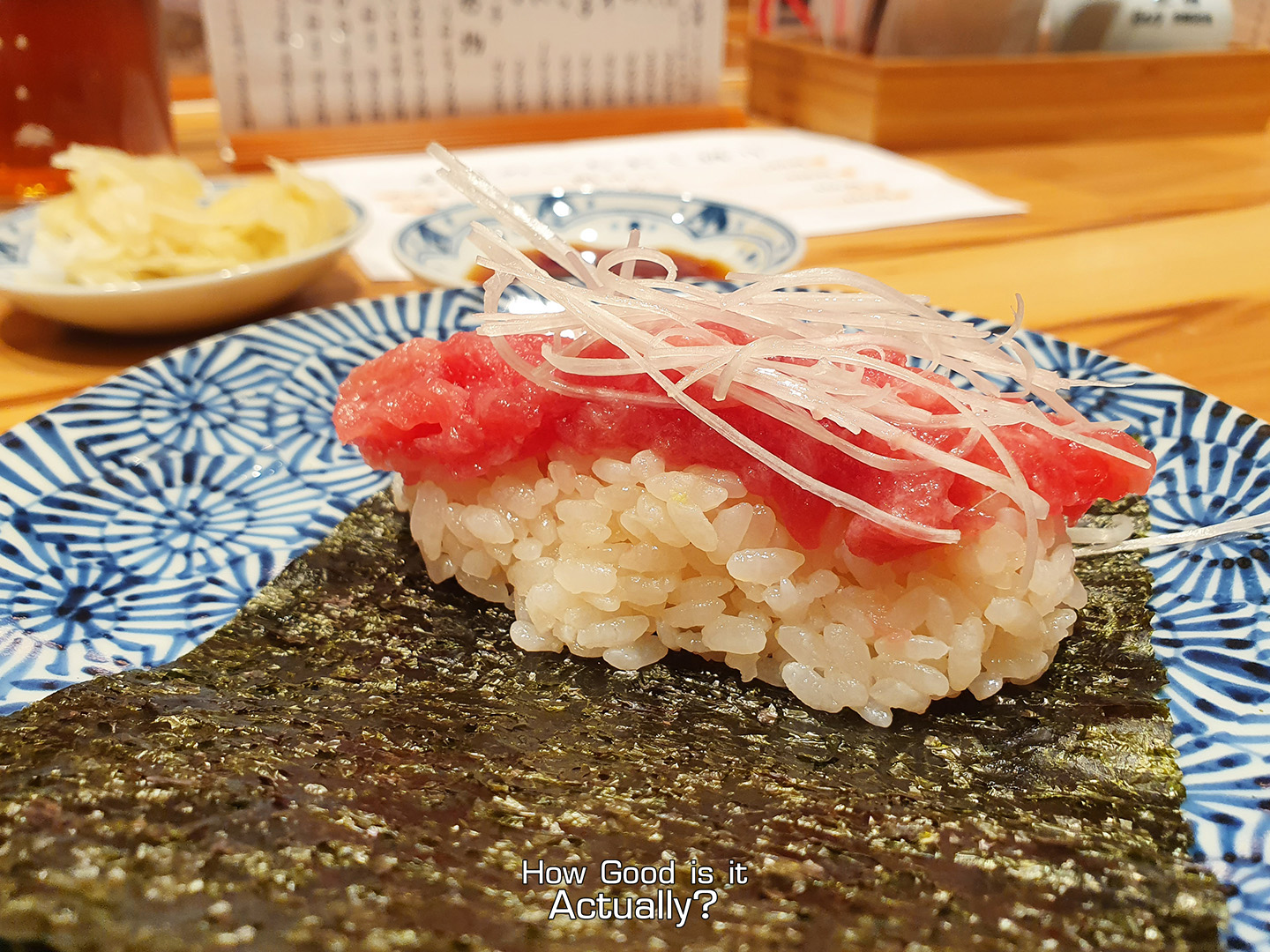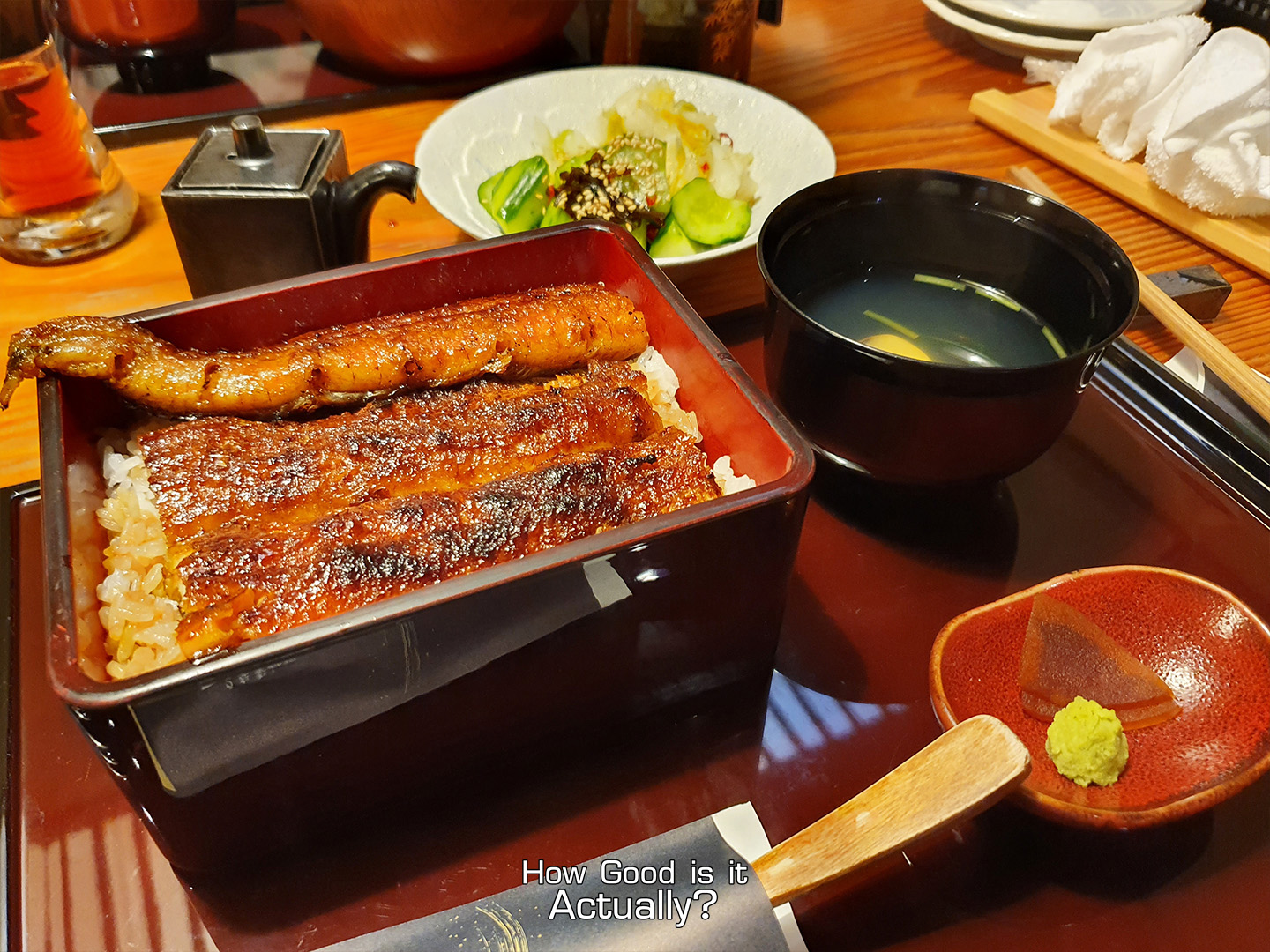As Tokyo’s oldest temple, Sensoji Temple isn’t just a symbol of Asakusa, but also quite the popular destination for both locals and tourists. And as a complete change of scenery from the urban lifestyle of Tokyo, Sensoji is also a great place to take in another aspect of Japan’s history and culture. So before I head down to Akihabara for a final round of shopping, I made my way to Asakusa for a quick visit to the temple.
It’s been years since I’ve visited Sensoji, so let’s see if the place is still as impressive as I remembered. How Good Is Sensoji Temple Actually?
__________
🌇 Kaminarimon Gate 🌇
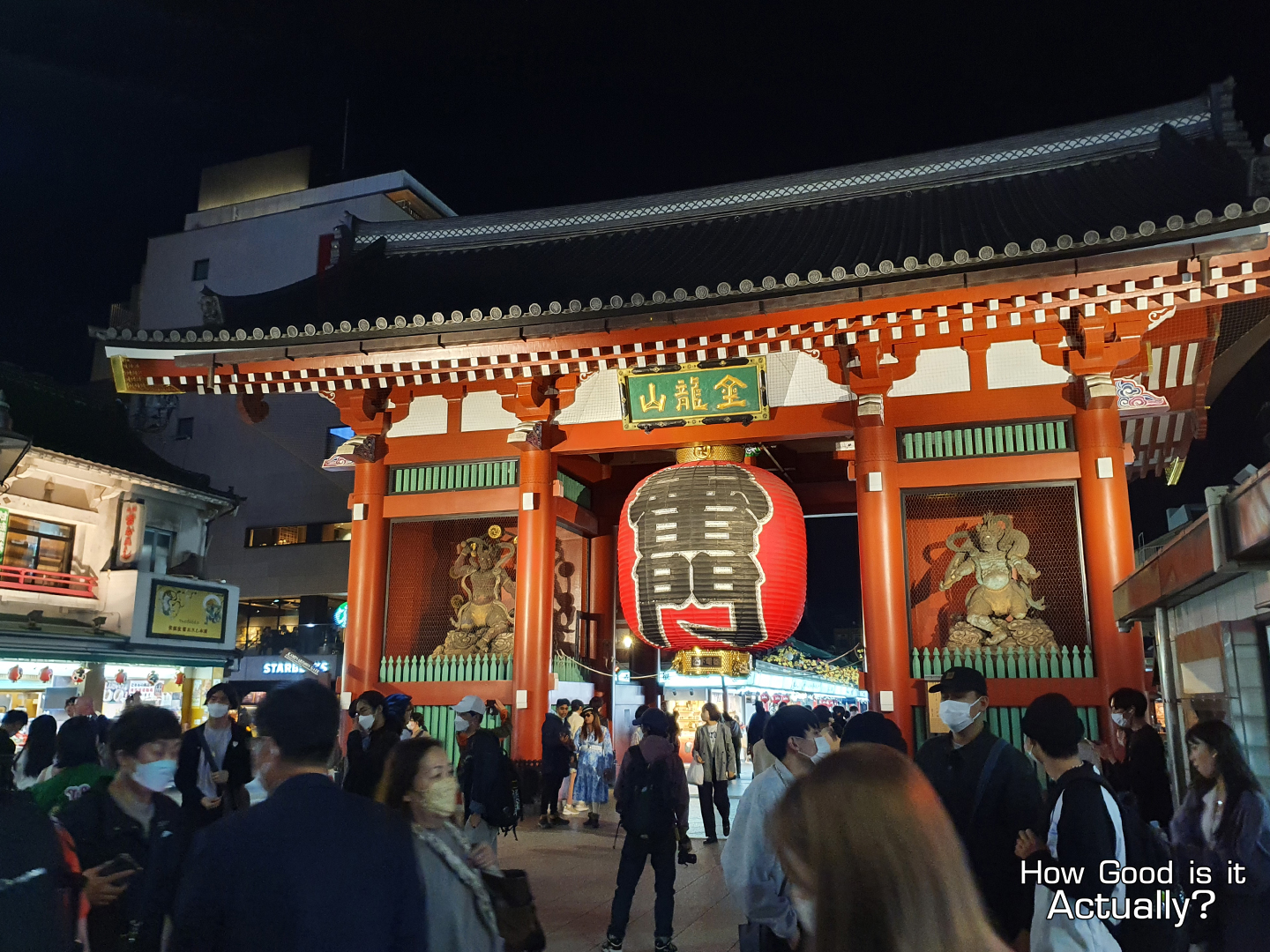
Right at the entrance of Sensoji Temple, we have the Kaminarimon, a single storey gate featuring a giant chōchin lantern in the center, the gods of Fūjin and Raijin at the gate’s front side, and the gods of Tenryū and Kinryū towards the back side.
As the entrance point to one of Tokyo’s most famous hotspots, this is most often the most crowded area of the entire temple (even at night!). But that’s not all Sensoji has to offer, of course. So once you are finished admiring the gate’s impressive architecture (and after grabbing some photos), head through the gate and continue your journey through Sensoji Temple.
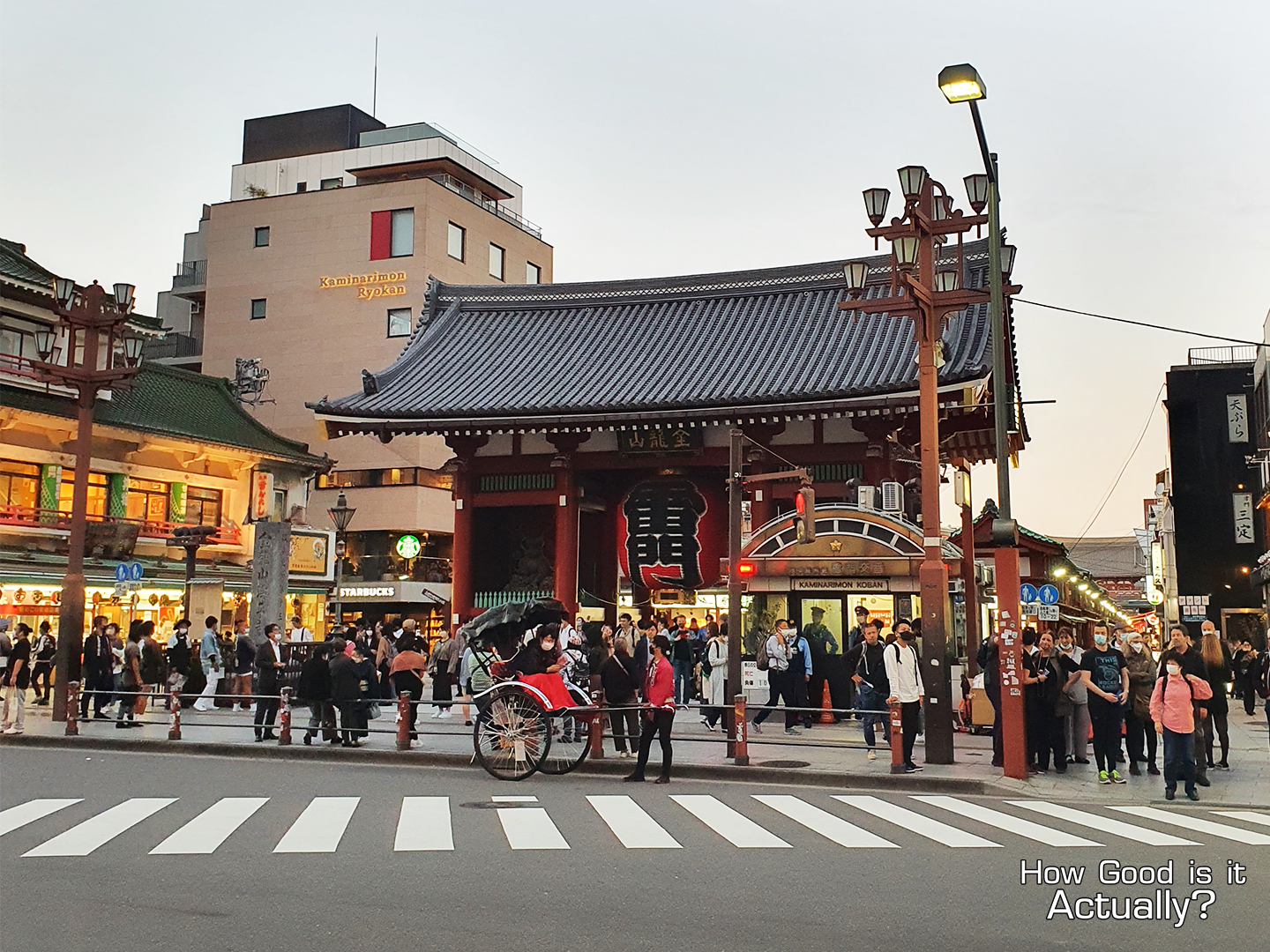
__________
🌇 Hozomon Gate 🌇
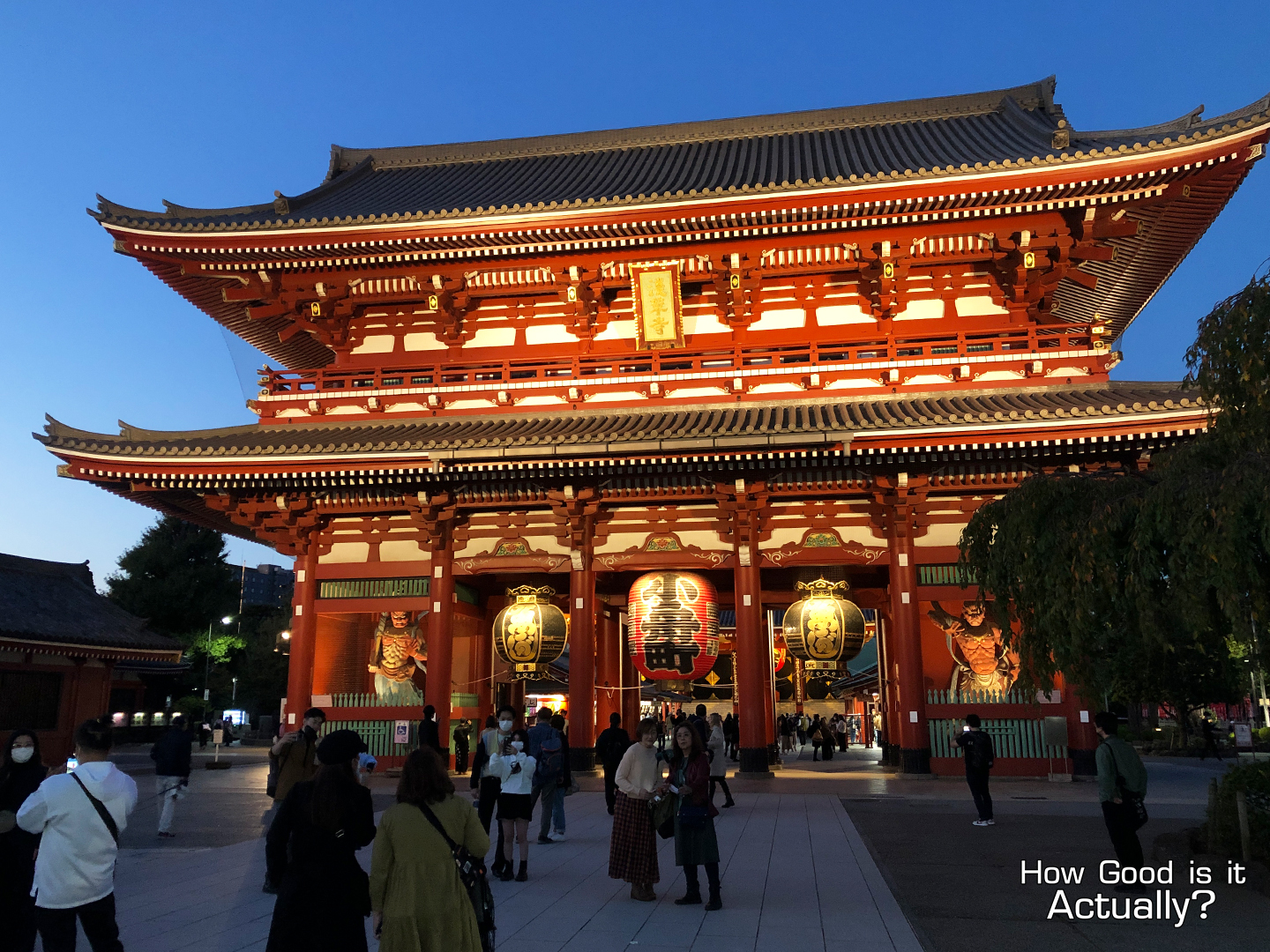
While the Kaminarimon is Sensoji Temple’s front entrance, the Hozomon gate acts as the entrance point to the temple’s main area.
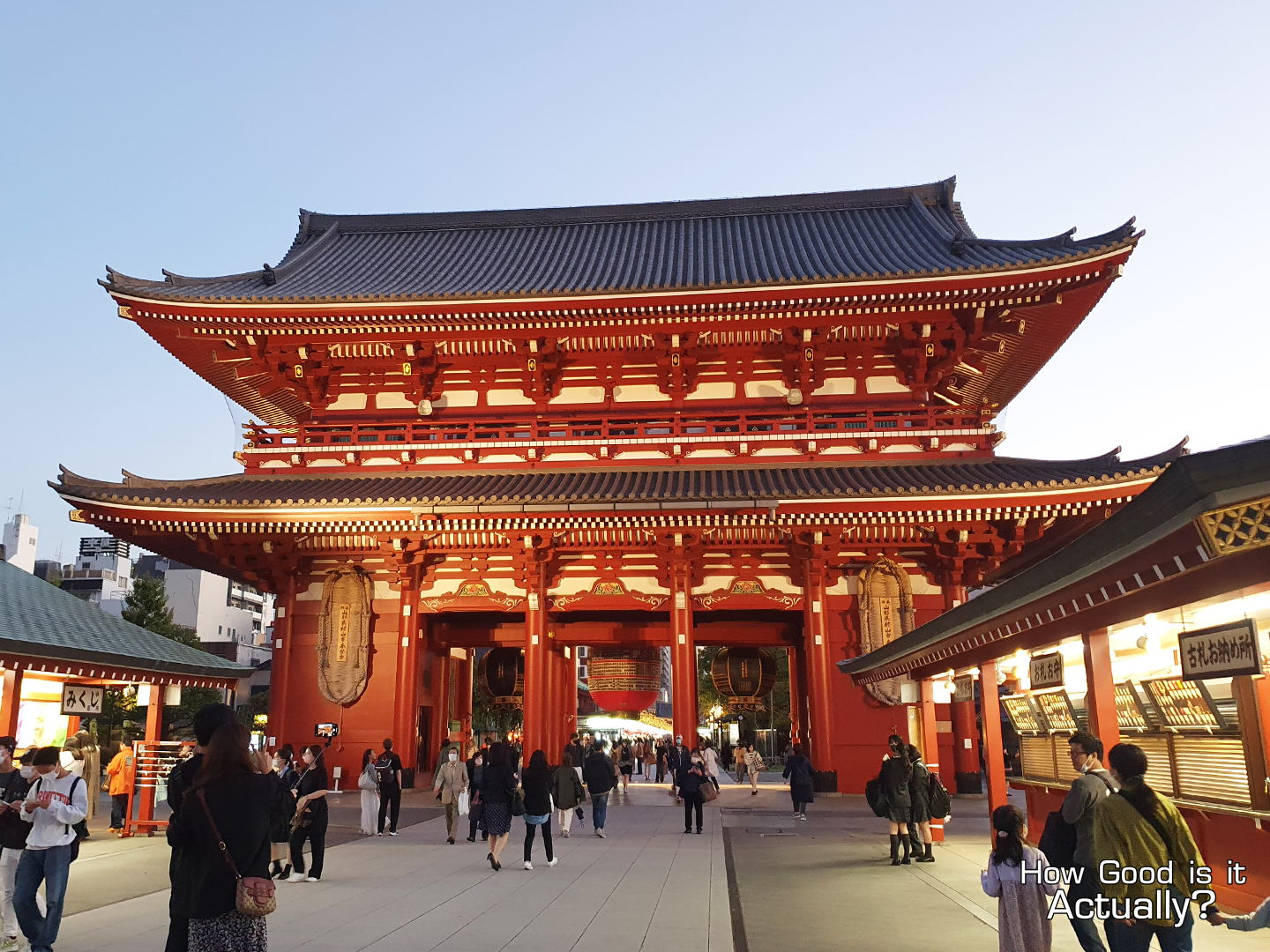
As you walk through the gate, Sensoji Temple branches off into a few different sections, with the main Kannon Hall directly ahead, with gardens and gates located throughout the temple grounds.
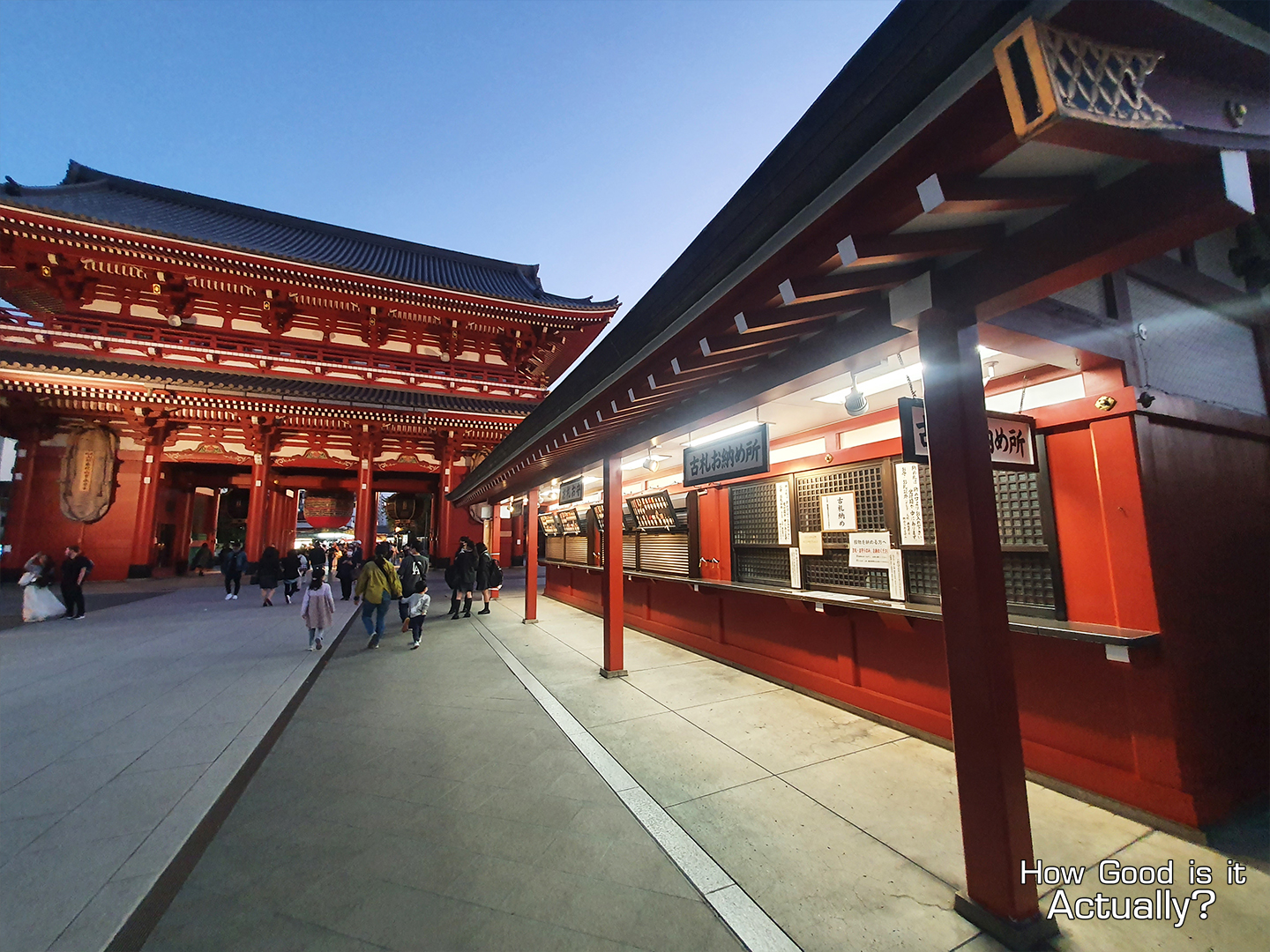
There’s also a small shop right next to the gate for visitors to buy a variety of omamori charms, including ones that offer good luck, good health, and safety in traffic. Have a look at their offerings and maybe grab yourself some (they also make for nice souvenirs!)
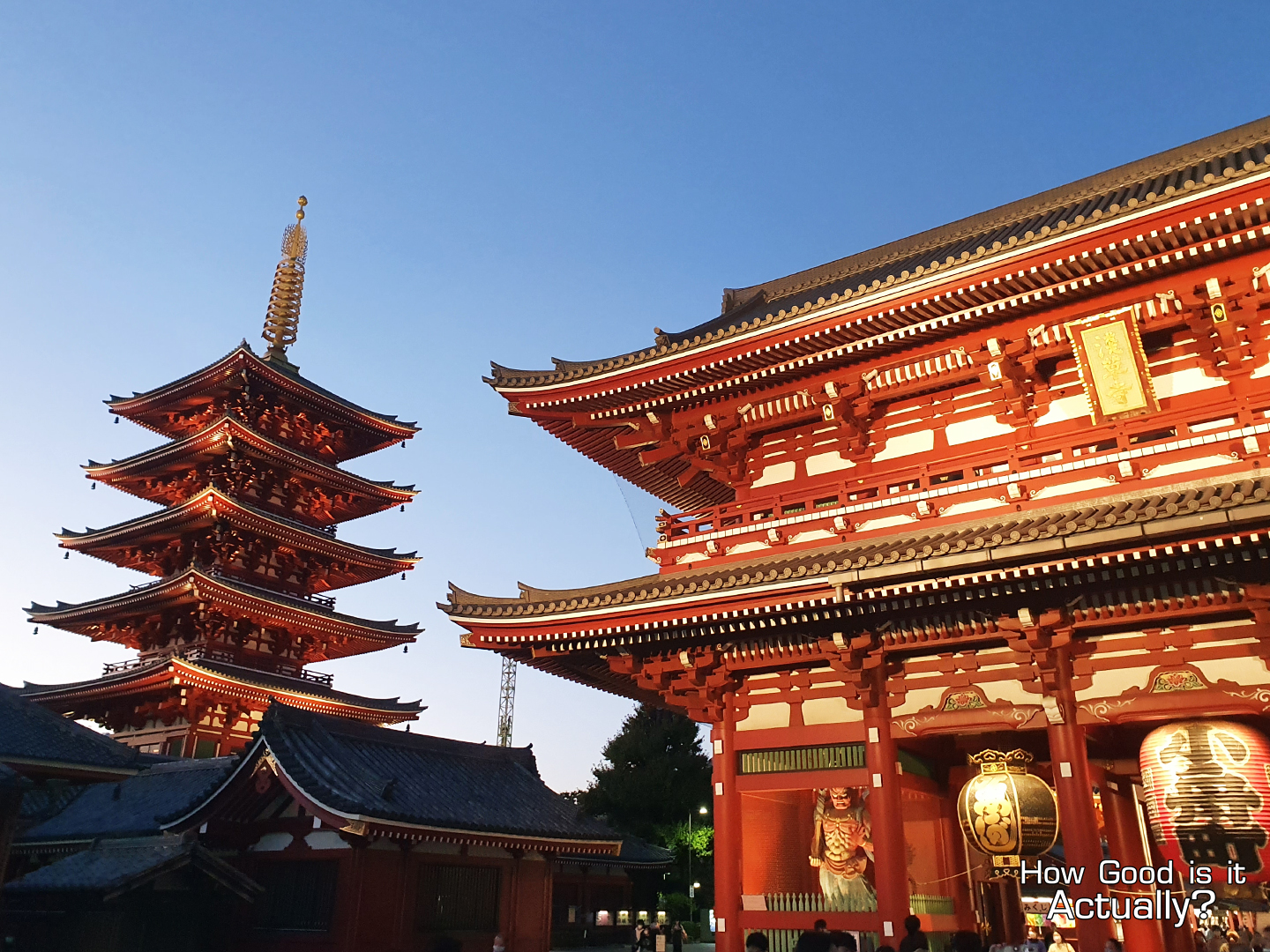
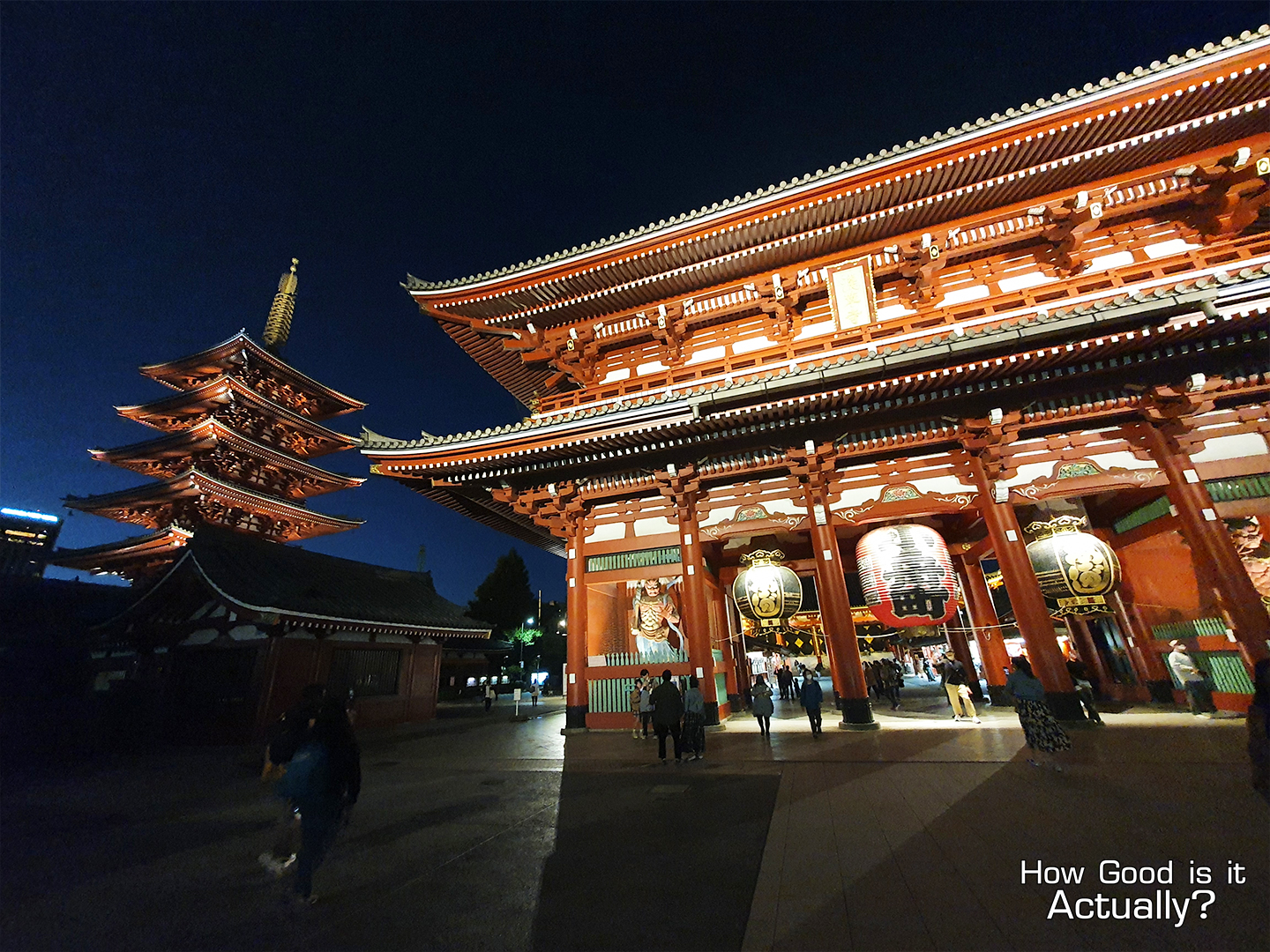
__________
🌇 Five-Storied Pagoda 🌇
To the left of Hozomon Gate is the Five-Storied Pagoda – the tallest structure at Sensoji. It’s primarily a sacred memorial site, so the building is only accessible by a select few and their families. But as a sightseeing spot, it’s definitely one of the more stunning areas of Sensoji.
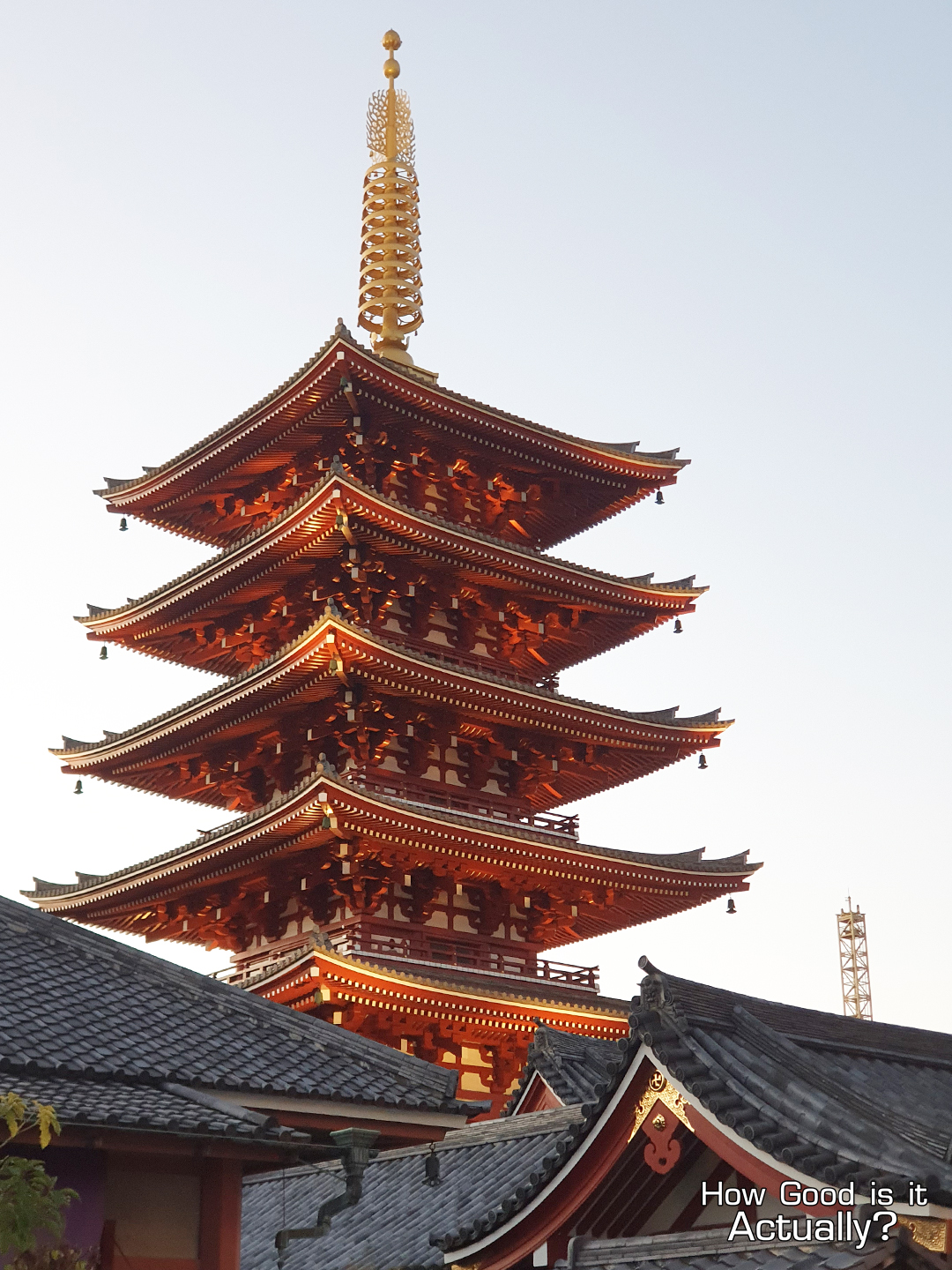
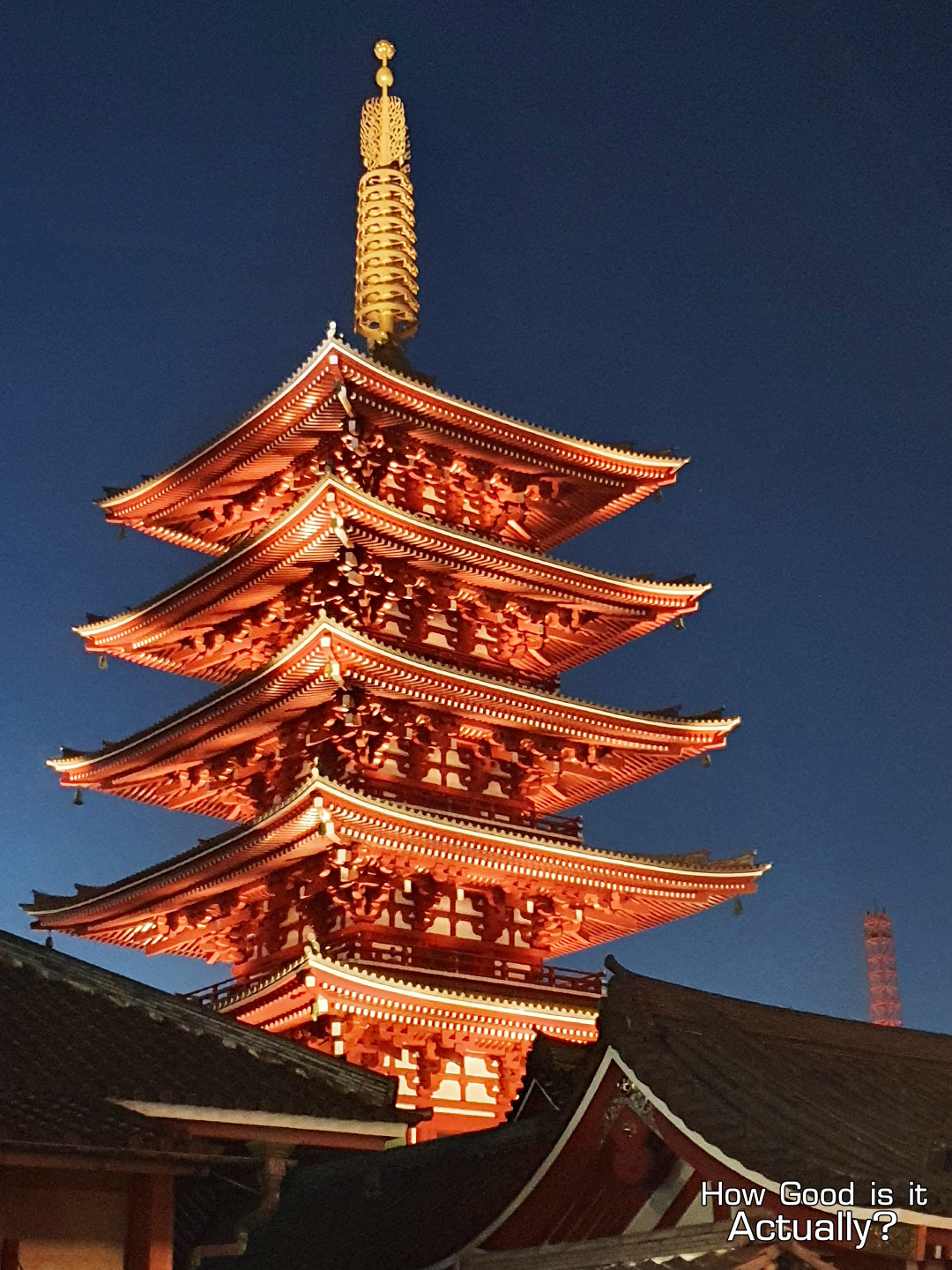
Like with most other areas of Sensoji, the Pagoda is also lit up once sundown hits. It’s especially notable here, as there the bottom-up lighting illuminates the underside of the roof, resulting in a completely different (and impressive) scenery. If you happen to visit in the late afternoon, explore the rest of Asakusa for a little while, and come back to experience both versions of the pagoda.
__________
🌇 Kannondo Hall 🌇
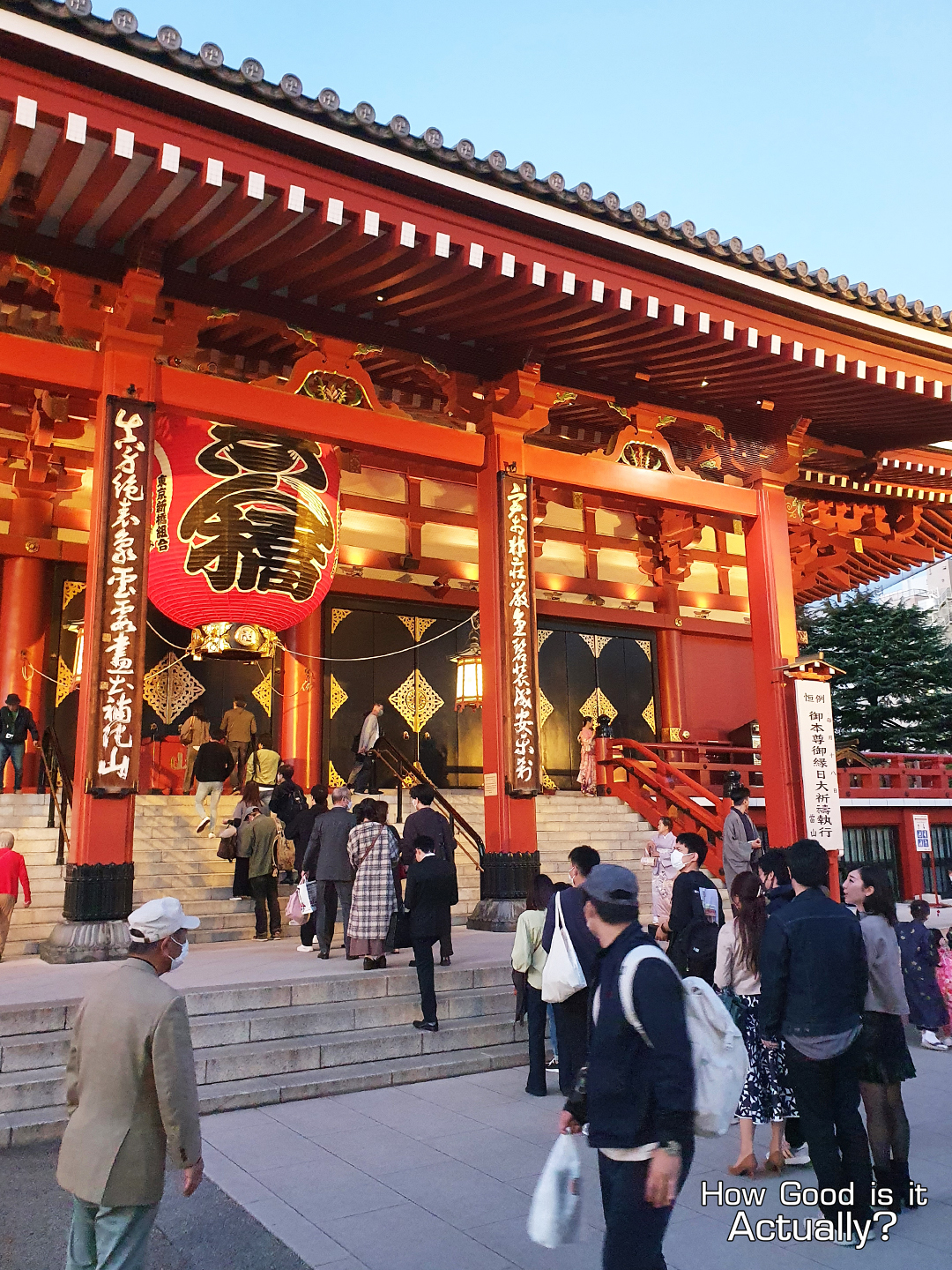
At the very end of inner Sensoji is Kannondo Hall. As the history of Sensoji describes, inside these halls still houses the original Kannon statue two fishermen fished up in 628 AD (with the statue so radiant, it has been buried ever since.) While the statue isn’t actually visible, the hall is also one of the more popular areas of the temple (as one expects from a temple’s main area), with visitors carrying incense as they make their way to the doors of the halls offering prayers and donations to the temple.
__________
🌇 Namikase-Dori Shopping Street 🌇
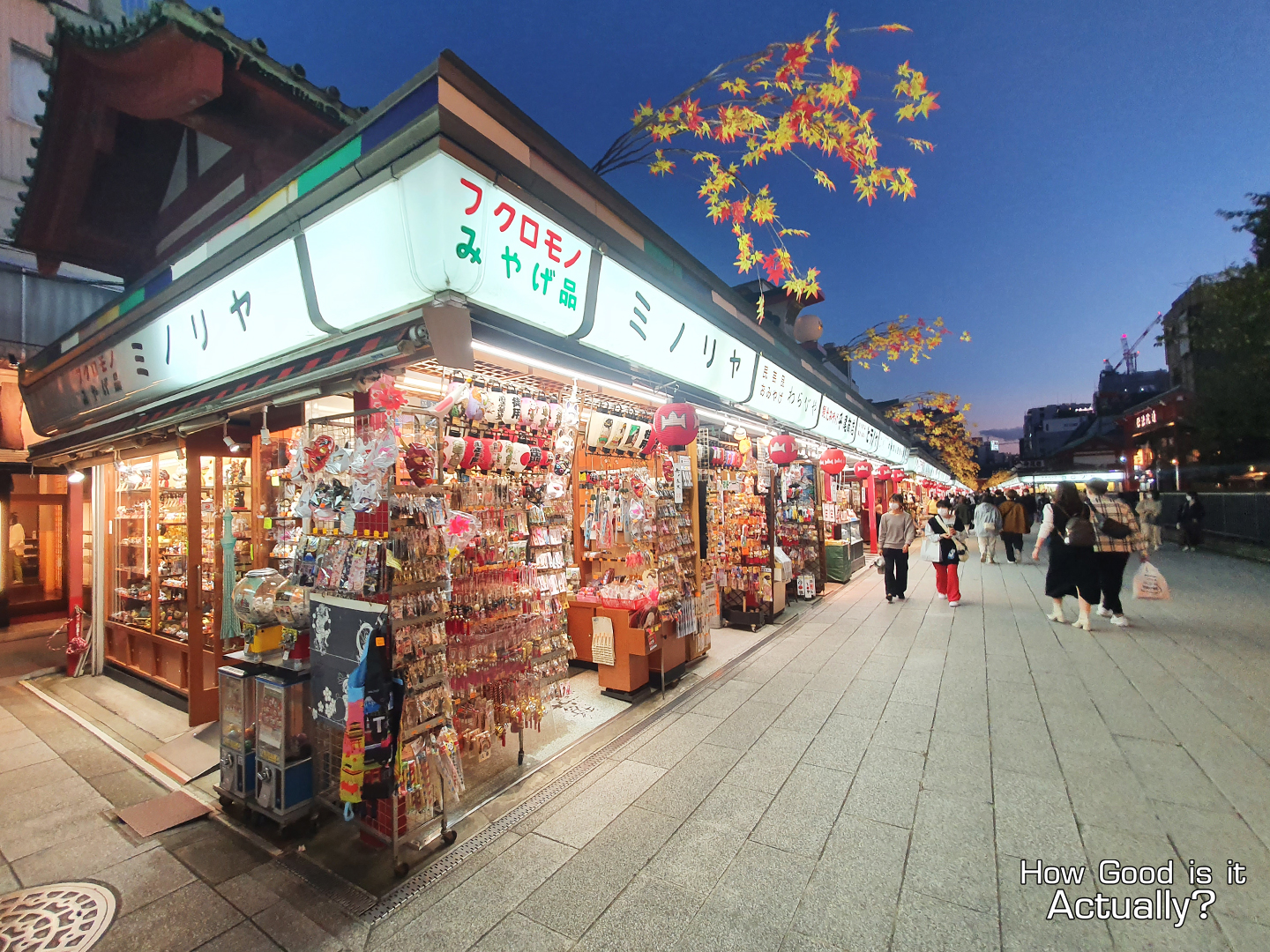
Between the Kaminarimon gate and main Sensoji area, you’ll encounter Namikase Shopping Street. This 250m road connecting Sensoji’s outer gate to the inner temple area is home to a selection of stores ranging from street snacks to souvenirs.
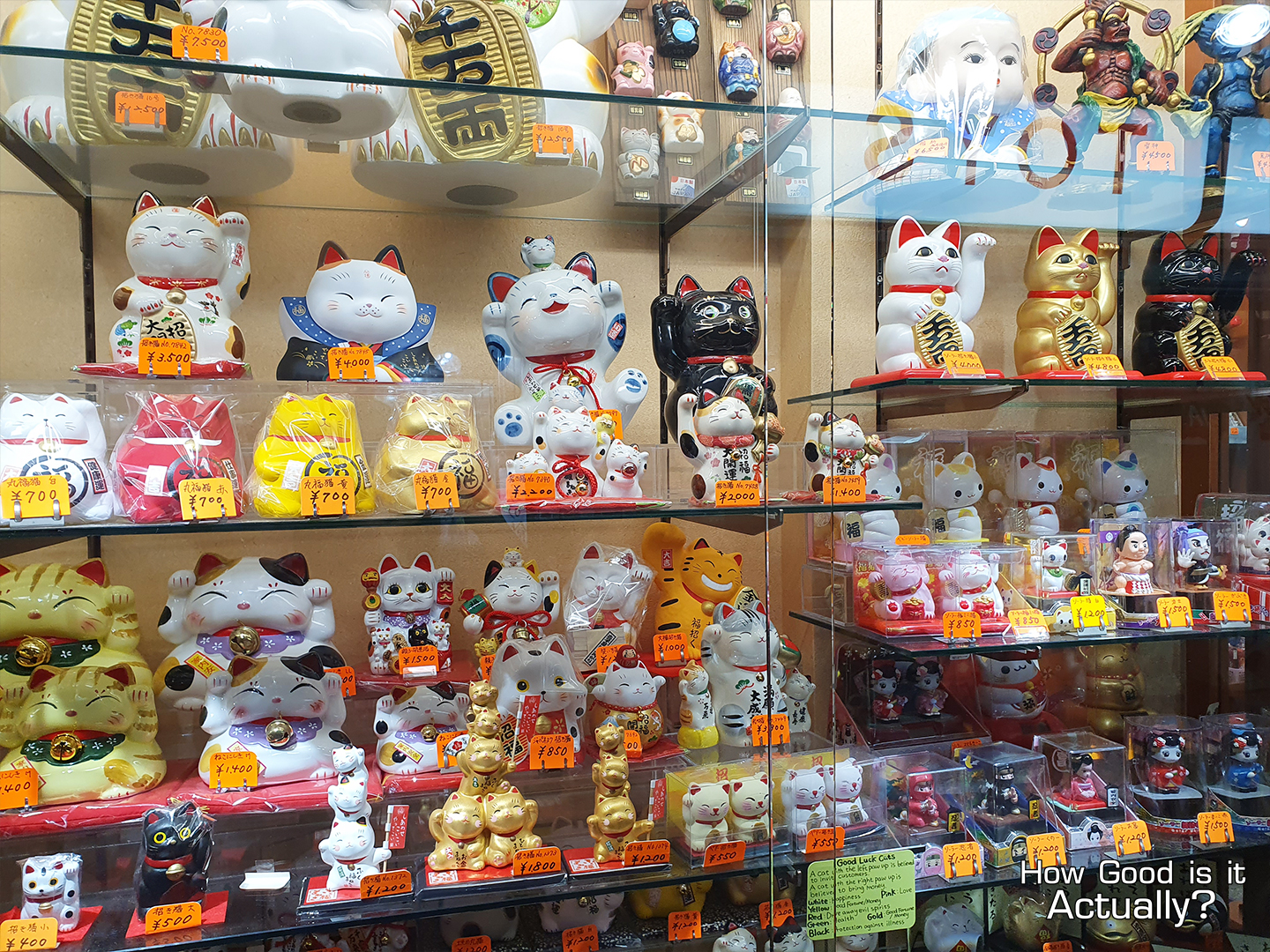
From senbei rice crackers and freshly-baked ningoyaki, to Kimonos and Maneki Neko figurines, there’s a whole lot to explore as you head towards (and back from) the main temple area.
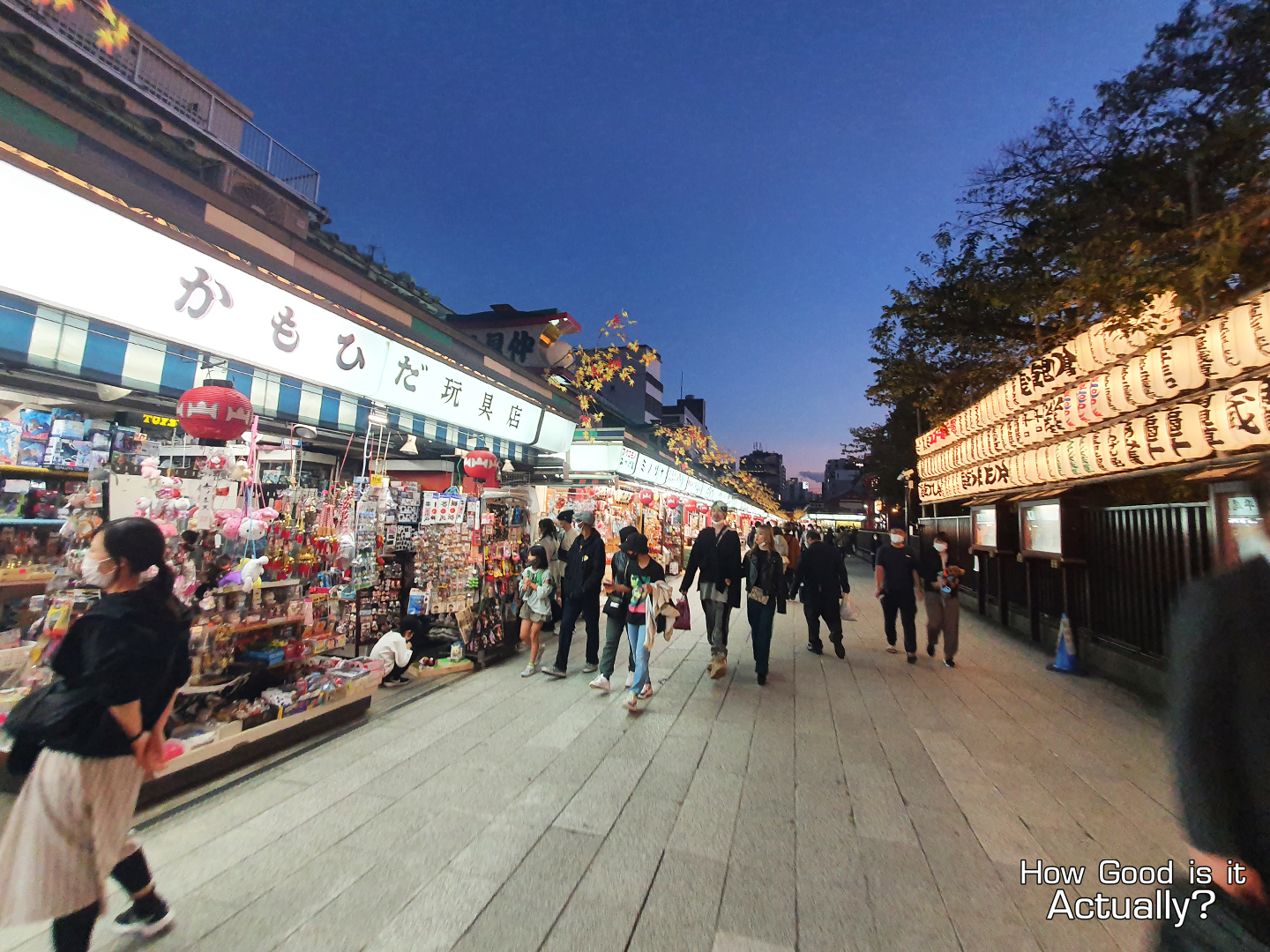
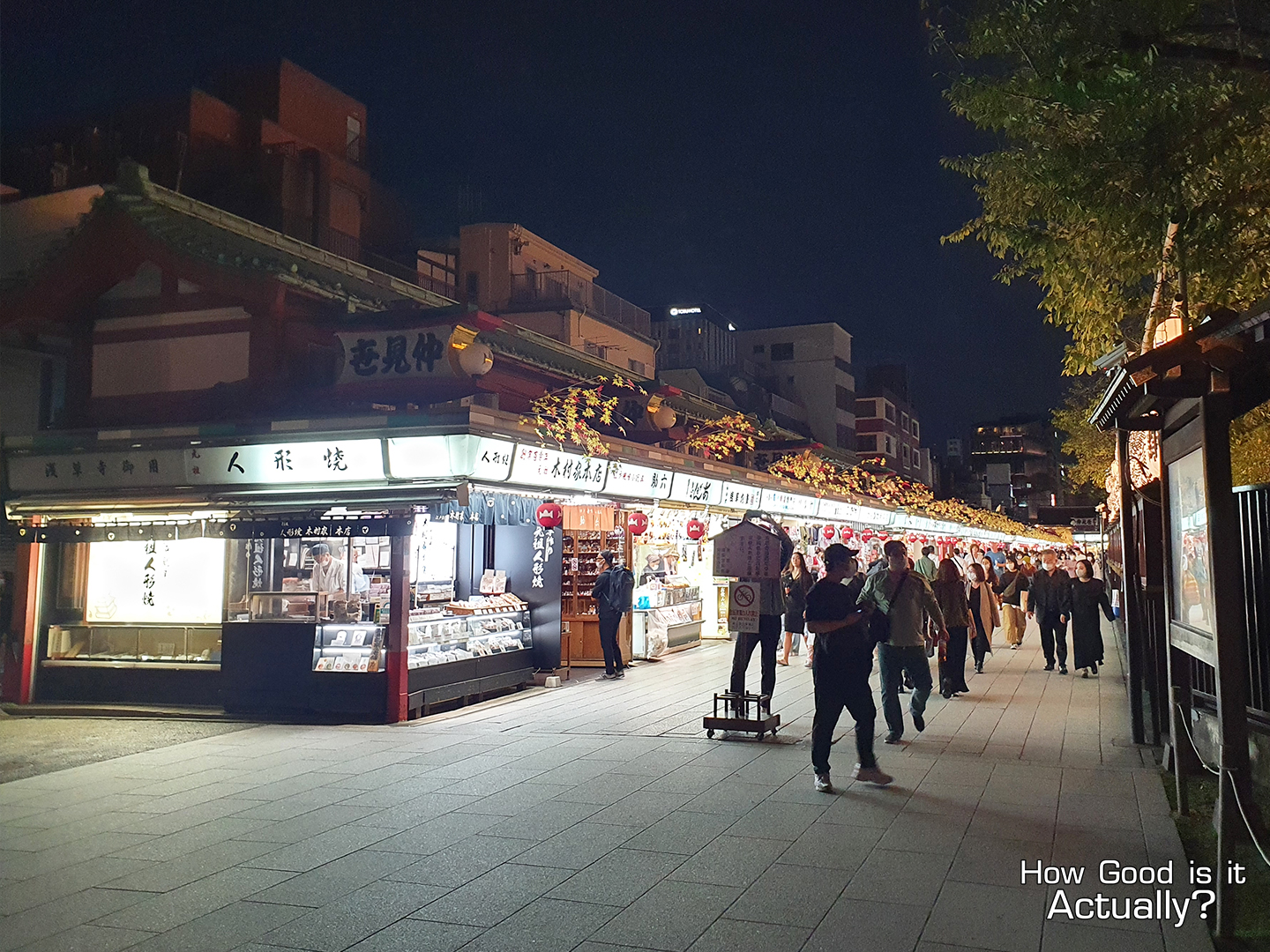
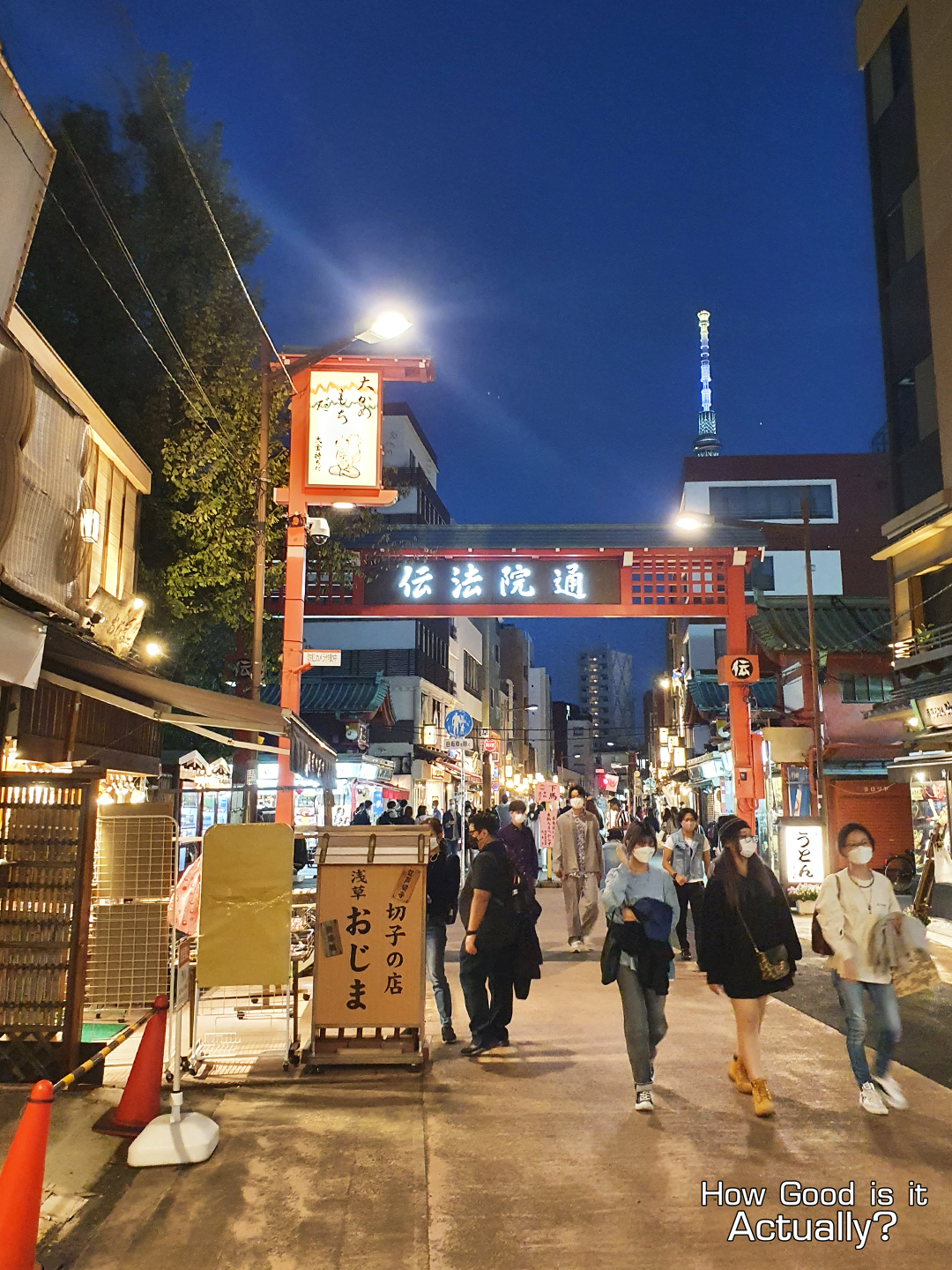
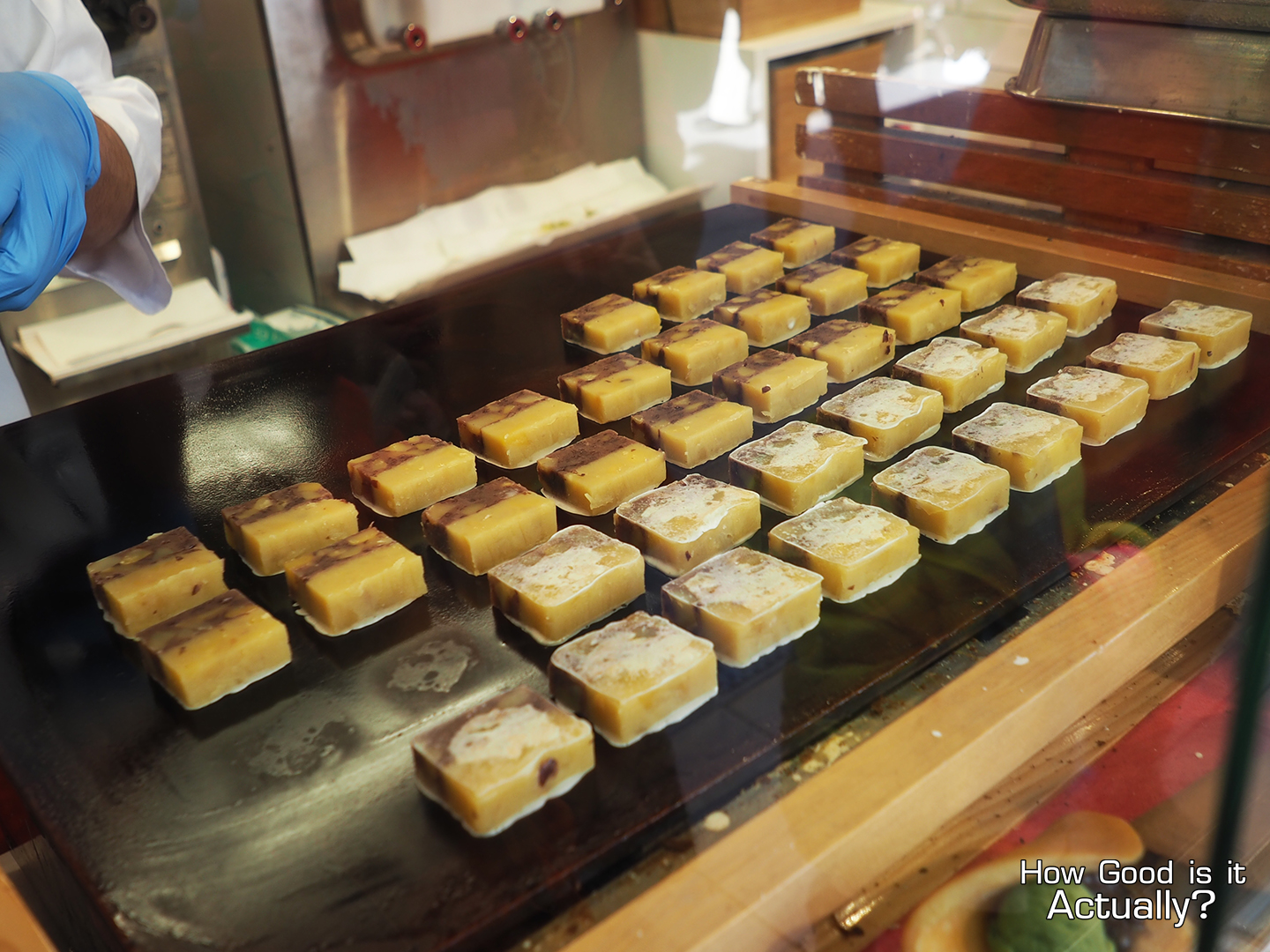
__________
🌇 Other Areas in Sensoji 🌇
What I’ve covered today at Sensoji isn’t everything they have to offer, of course. While the places above more or less span a straight line, once you arrive at the inner Hozomon Gate, the temple area branches off into a few directions, each with their own halls, monuments, and gardens. The place overall isn’t overly big, so you can easily fit the area into a single afternoon’s schedule.
__________
⭐VERDICT⭐

So how good is Sensoji actually? Temples and shrines probably aren’t the first things you picture when it comes to Tokyo. Regardless, Sensoji’s honestly quite the nice place to visit. From the entrance gate of Kaminarimon (also the symbol of Asakusa itself) to the Kannondo Hall and Namikase Shopping Street, the mix of impressive architecture and history (combined with some interesting souvenirs) is something you should definitely include in your schedule when you visit Tokyo.
Even if you’re not too into Japanese history and religion, Sensoji is definitely worth the visit, and a great change of scenery from the bustling, urban environment that is Tokyo – all while embracing the rich history of the city’s oldest temple.
__________
🚗HOW TO GET THERE 🚗
Sensoji is located right around Asakusa Station, and only a few stations away from Ueno Station. Once you arrive at the station (via the Ginza or Asakusa Line), head to Exit 3 and Kaminarimon Gate is only a 3 minute walk away.

Asakusa: Sensoji Temple, Kaminarimon & Namikase Shopping Street
🌏 Location 🌏
2 Chome-3-1 Asakusa, Taito City, Tokyo 111-0032, Japan
🗺 Map 🗺
https://goo.gl/maps/3HJyN9QeAYeqGEo67
⏰ Opening Hours ⏰
24 hours for the Kaminarimon Gate, 6A.M. to 5P.M. for the main hall, and until 11P.M for for the lights at the temple.
💻 Website 💻
https://www.senso-ji.jp/english/
__________
